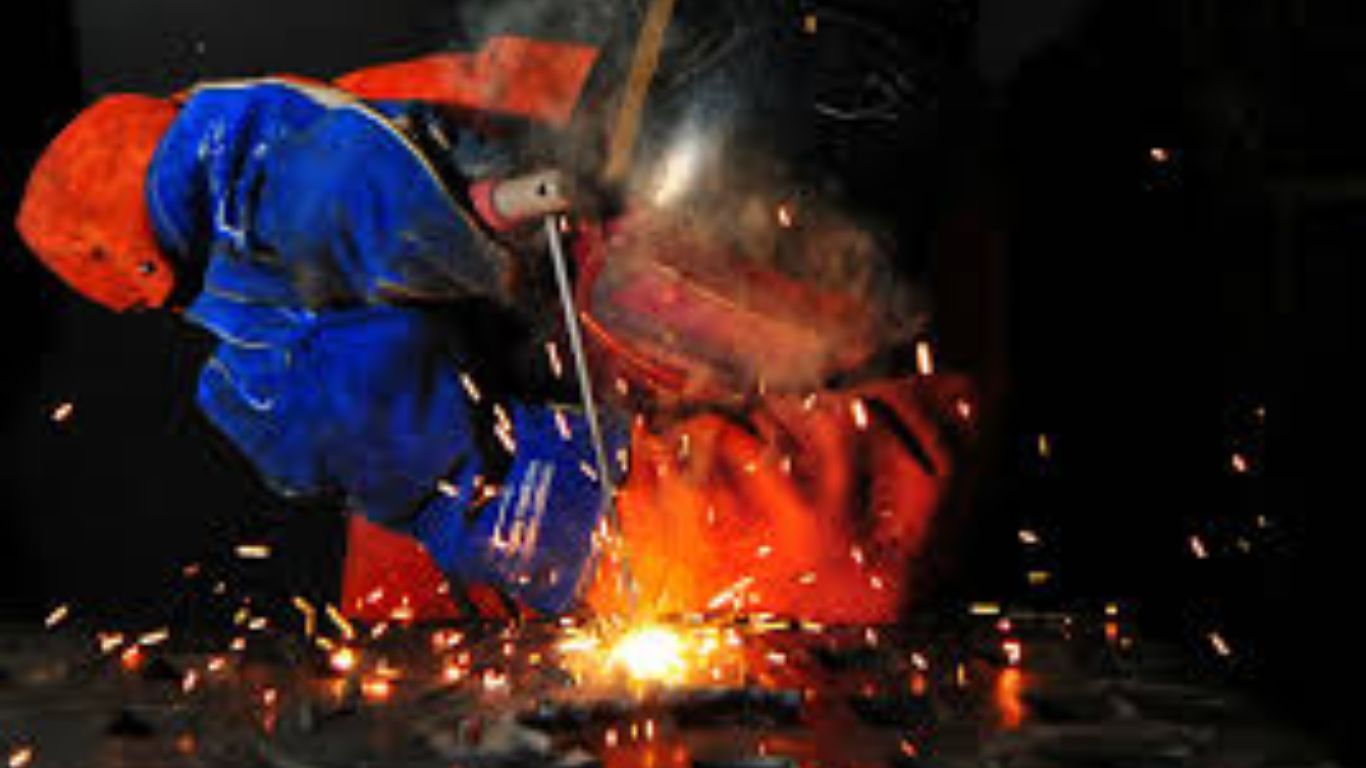What is Ultrasonic Welding (USW)?
Ultrasonic welding is defined as “A solid state welding process wherein coalescence is produced by the local application of high frequency vibratory energy as the work parts are held together under pressure”.
Working of ultrasonic welding
The two parts to be joined are clamped together under a modest static pressure normal to their interface, between a flat lower support (anvil) and an upper electrode called the sonotrode, which has a large radius to centralise the force, (Fig. 5.40). The work is subjected to oscillating shear stresses of ultrasonic frequencies (≥ 20 kHz) approximately parallel to the plane of the interface, for a period of 1 second or less.
The vibrations and pressure cause movements. of the metal molecules breaking up the surface oxide, thus lowering the surface resistance of the alloys and the two surfaces diffuse into each other to give a solid state weld
The method does not involve melting of metals (of course there is some heating of the work due to the internal friction by the vibrations), nor does it involve the high pressures and large deformations characteristic of deformation welding, and it is accomplished in much shorter times and at lower pressures than are required for diffusion welding.
Metal thickness is in the range of 0.005 mm to about 1.0 mm for steel and 3 mm for aluminium. Most metals can be welded and also dissimilar metals, The process is suitable for lap welding foils and delicate instrument and electronic components. Seam welds can be produced by replacing the welding tip by a roller.
The method is also employed for welding parts made of organic glass, PVC plastic, polyethylene, vinyl chloride and polystyrene, with maximum thickness of welded components being 10 mm. The method provides high productivity.
advantages of the ultrasonic welding
1. Welds are strong and free from foreign inclusions.
2. Very little preparation is needed for the weld; usually, it invol-ves decreasing.
3. Post cleaning of welds is usually not necessary.
4. Thin pieces can be welded to thicker pieces.
Product applications. The range of applications of the process can meet many of the requirements of the atomic and electronic sections of industry. The process is used for :
Air-craft construction, for the building of transistors, for fine-wire assemblies, bimetal electrical contacts, light-gauge metal for the production of containers and for the welding of aluminium foil for packaging requirements.
